Weißenburg, a historic town located in Bavaria, Germany, is known for its rich cultural heritage and scenic landscapes. The town boasts a variety of attractions, including the Roman Museum with its impressive Roman baths, and the Limes, a UNESCO World Heritage site. The medieval fortress Wülzburg offers panoramic views and a glimpse into the town’s storied past. Weißenburg also provides numerous recreational activities such as hiking and cycling in the surrounding natural parks. The town is vibrant with cultural events, local markets, and festivals, making it a charming place for residents and visitors alike.

While steeped in history dating back to the first century, Weißenburg is also a modern place to live and work. The town recently installed a highly capable network to support the city’s public facilities now and well into the future.
Bringing Modern Networking to the Town
For most modern municipalities, computer networking with robust internet access is as important a utility as electricity and water. In 2020, the city undertook a significant effort to modernize and expand the network that, at the time, just served the town hall building. The legacy network consisted primarily of old Allied Telesis switches and outdated networking equipment from HPE. In addition to installing state-of-the-art technology, the objective was to expand the network to include connectivity for local schools, a sewage treatment plant, a city museum, the Roman thermal baths attraction, and a postal office—24 buildings in all.
The town’s IT team planned and designed the network, choosing to base the network infrastructure on Allied Telesis equipment and management software. They did so for several reasons, including the ease of centrally and remotely managing an Allied Telesis network, the resiliency of such a network in the face of unexpected problems, and the strong security capabilities inherent in Allied Telesis products. The systems integration company AMRO IT-Systeme GmbH was then engaged to provide all the equipment.
The City Managers Set Critical Criteria for the Solution
Given the geographical spread of the planned network, a fiber optic ring was drawn through the entire town. This allowed the large number of dispersed facilities to connect to the network using the most appropriate technology for each building, including wired and wireless LANs from a single source, thus creating a homogeneous network. To facilitate network management and security, all properties are in their own VLAN.
Next, the entire legacy infrastructure was upgraded to the latest Allied Telesis products, including switches, Wi-Fi access, and an intelligent management framework. Overlaying all this equipment is centralized management based on Autonomous Management Framework Plus (AMF Plus) and Vista Manager EX, both from Allied Telesis.
AMF Plus is a sophisticated suite of management tools that provides an automated and simplified approach to network management. Powerful features like centralized management, auto-backup, auto-upgrade, auto-provisioning, and auto-recovery enable plug-and-play networking and zero-touch management.
Allied Telesis’ Vista Manager EX network management software pairs with AMF Plus and the Autonomous Wave Control (AWC) wireless controller to optimize the operation of wired and wireless networks. Vista Manager EX offers a clear network and floor map for monitoring the network and Wi-Fi components across the town’s various locations. AWC autonomously analyzes the wireless network and improves performance to provide an exceptional user experience and reduce administration time and cost.
Security is another major consideration for the network. Allied Telesis incorporates intelligent security into its hardware products and management tools to automate network defense and reduce security cost and complexity.
The Pandemic Posed a Unique Challenge
The timing of this project posed a unique challenge for the implementation team. In 2020, the global pandemic greatly disrupted business processes and logistics all over the world. Restrictions for social distancing meant that people could not work side by side to facilitate the project. Therefore, the equipment was installed and commissioned remotely—the first time that had been done in the DACH region. It proved successful and is now a common practice.
Despite the challenges, the project was completed successfully and the town of Weißenburg is reaping the benefits of the new network. For example, it vastly expanded capacity and connectivity for a growing number of city services.
“The network is engineered to be robust, scalable, resilient and secure,” says Jürgen Reutelhuber, Managing Director of AMRO IT-Systeme. “The city of Weißenburg is well-positioned with its new network, now and into the future. This will help the municipality provide educational and governmental services more efficiently for years to come.”






























